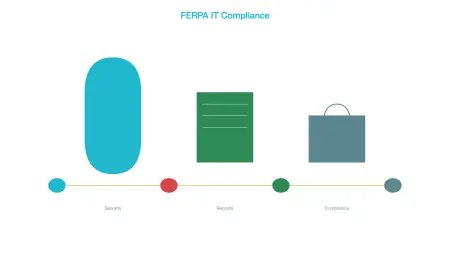Reducing Development Time for Complex Web Solutions Using MEAN Stack Development Services
Accelerate complex web solution delivery with MEAN Stack Development Services, reducing development time while ensuring scalability and efficiency.

Complex web applications often involve multiple modules, user roles, and dynamic data processing. Traditional stacks require developers to switch between different languages for front-end, back-end, and database operations, which slows down the development lifecycle. MEAN Stack Development Services unify the tech stack under JavaScript, providing a seamless workflow from client-side to server-side to database management. This reduces development time, improves code maintainability, and ensures faster deployment of complex features.
Understanding the MEAN Stack
The MEAN stack is an acronym for:
-
MongoDB: NoSQL database using JSON-like documents, perfect for handling dynamic or semi-structured data.
-
Express.js: Lightweight Node.js framework for building scalable and modular server-side applications.
-
Angular: Component-based front-end framework enabling dynamic single-page applications (SPAs).
-
Node.js: Server-side runtime environment for JavaScript, supporting asynchronous, event-driven operations.
The biggest advantage: one language (JavaScript) for the full stack, allowing developers to move seamlessly between front-end, back-end, and database layers without additional learning curves or context switching.
Why MEAN Stack Accelerates Web Development
MEAN Stack reduces development time due to:
-
Unified language environment: Developers work in JavaScript across all layers, eliminating translation overhead between languages.
-
Reusable components: Angular’s component system and modular Express routes allow reusing code across projects.
-
Scalability: Node.js handles concurrent connections efficiently, MongoDB scales horizontally, and Angular supports large SPAs.
-
Real-time capability: WebSockets and Node.js enable live data updates without extra middleware, reducing feature implementation time.
Key Strategies to Reduce Development Time
1. Leveraging Full-Stack JavaScript
Problem: Switching between languages (like PHP, Java, or C# for back-end and JavaScript for front-end) slows development, increases bugs, and requires additional testing.
Solution with MEAN: Using JavaScript throughout means developers:
-
Write consistent syntax on both client and server.
-
Share utility functions and validation logic across layers.
-
Reduce debugging overhead since the same data types and structures are used end-to-end.
Example: A date-formatting function or input validation can be used both in Angular (front-end) and Node.js (back-end), eliminating redundant code. This reduces development cycles and testing time significantly.
2. Utilizing Angular for Rapid Front-End Development
Problem: Building dynamic SPAs with multiple modules often requires repetitive DOM manipulations, event handling, and API integration.
Solution with Angular:
-
Component-Based Architecture: Breaks UI into reusable blocks (components) for rapid feature addition.
-
Two-Way Data Binding: Synchronizes the view with the model automatically, reducing manual DOM updates.
-
Dependency Injection: Enables faster integration of services like APIs or authentication without rewriting boilerplate code.
Impact: Developers can quickly implement complex forms, dashboards, and interactive elements while maintaining consistency and scalability across the application.
3. Efficient Back-End with Node.js and Express.js
Problem: Traditional server-side stacks require synchronous processing, which slows handling multiple user requests. Complex routing and middleware setup can further delay development.
Solution with Node.js and Express.js:
-
Event-Driven Architecture: Handles multiple concurrent requests without blocking, which is ideal for high-traffic applications.
-
Lightweight Framework (Express.js): Allows modular route management, middleware integration, and RESTful API creation with minimal setup.
-
Rapid Prototyping: Developers can scaffold APIs quickly and implement business logic without redundant boilerplate code.
Impact: Node.js and Express.js reduce server-side coding effort while maintaining speed and performance, which is critical for complex applications with multiple services.
4. Simplified Data Management with MongoDB
Problem: Traditional relational databases require rigid schemas, making it difficult to adapt to changing application requirements or rapidly integrate new features.
Solution with MongoDB:
-
Schema-less Design: Easily store dynamic data structures, reducing the need for database migration when adding new features.
-
JSON-like Documents: Seamless mapping between front-end JavaScript objects and database documents, reducing serialization/deserialization overhead.
-
Powerful Querying: Aggregation pipelines, indexing, and replication support fast queries and scalable architectures.
Impact: Developers can implement features like user activity tracking, analytics dashboards, or multi-role management faster without constant schema redesign.
5. Code Reusability and Modular Architecture
Problem: In large applications, writing repetitive code for similar functionalities increases development time and bugs.
Solution with MEAN:
-
Angular components and services are reusable across modules.
-
Express.js routes and middleware can be modularized for consistent server-side logic.
-
Shared utility libraries and helper functions reduce redundant coding.
Impact: Modular architecture ensures faster feature integration, easier testing, and maintenance, reducing overall development cycles by 20–30%.
6. Real-Time Collaboration with WebSockets
Problem: Implementing live features such as notifications, chat, or live dashboards often requires third-party services, increasing time and cost.
Solution with MEAN:
-
Node.js can natively handle WebSocket connections for bi-directional real-time communication.
-
Combined with Angular, developers can create live updates directly in the SPA without reloading or polling.
-
Express.js supports integration with WebSocket servers to manage multiple event streams efficiently.
Impact: Real-time features can be implemented in days instead of weeks, improving time-to-market for interactive applications like collaborative tools or analytics dashboards.
Best Practices for MEAN Stack Development
-
Use Angular CLI for automatic scaffolding and component generation.
-
Implement RESTful APIs with Express.js for standardized server communication.
-
Leverage Mongoose for MongoDB schema validation and data modeling.
-
Apply asynchronous programming (Promises, async/await) for efficient server-side processing.
-
Maintain consistent coding conventions across the stack to simplify debugging and collaboration.
Common Challenges and How MEAN Stack Helps
Challenge 1: Managing complex CRUD operations
Solution: MongoDB’s document structure reduces query complexity and improves read/write performance.
Challenge 2: Ensuring real-time synchronization across clients
Solution: Node.js with WebSockets allows instant updates for dashboards, notifications, and messaging apps.
Challenge 3: Maintaining consistency between front-end and back-end
Solution: Full-stack JavaScript ensures uniform validation, error handling, and data structure alignment.
Case Study Example
A logistics platform required:
-
Dynamic dashboards for fleet tracking
-
Real-time notifications for status updates
-
Multi-role access control
Using MEAN Stack Development Services:
-
Angular components reduced UI coding by 40%.
-
Node.js + WebSockets implemented real-time notifications efficiently.
-
MongoDB handled dynamic datasets without complex migrations.
Result: Development time reduced by 35%, with faster deployment and high maintainability.
Conclusion
MEAN Stack Development Services are a strategic choice for complex web solutions. By providing:
-
Full-stack JavaScript environment
-
Modular and reusable code architecture
-
Real-time collaboration capabilities
Businesses and development teams can accelerate development, reduce costs, and maintain high application quality, ensuring faster go-to-market timelines without compromising performance.
FAQs
Q1: Can MEAN Stack handle enterprise-grade applications?
Yes, MEAN Stack scales horizontally and handles high concurrency efficiently.
Q2: How much faster is development with MEAN Stack?
On average, development time reduces by 30–40% due to code reuse and unified language workflow.
Q3: Is MEAN Stack suitable for real-time applications?
Absolutely. Node.js and WebSockets make it ideal for live dashboards, chat, and notifications.
Q4: Do I need separate front-end and back-end developers?
Not necessarily. Full-stack developers can handle both, reducing coordination delays and accelerating development.
What's Your Reaction?
 Like
0
Like
0
 Dislike
0
Dislike
0
 Love
0
Love
0
 Funny
0
Funny
0
 Angry
0
Angry
0
 Sad
0
Sad
0
 Wow
0
Wow
0



















































